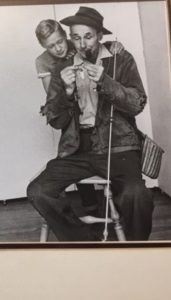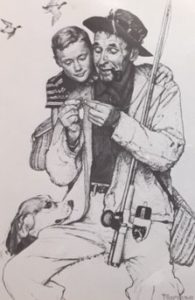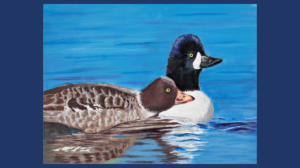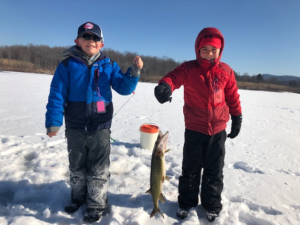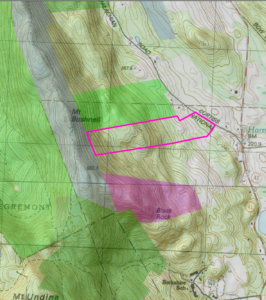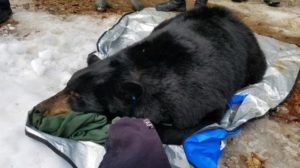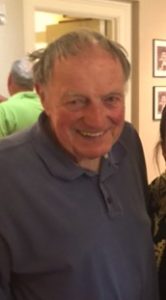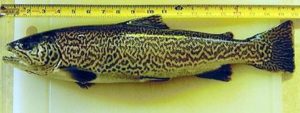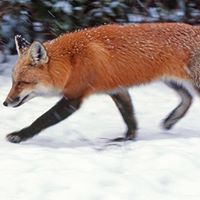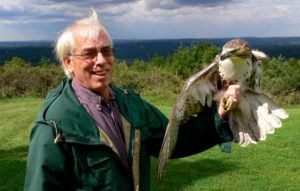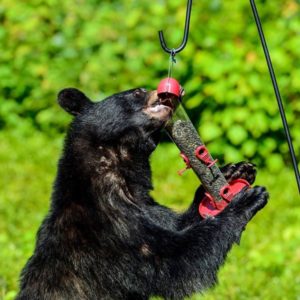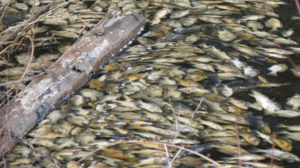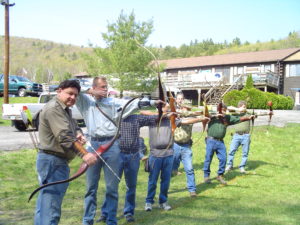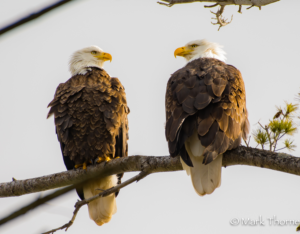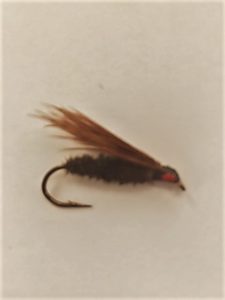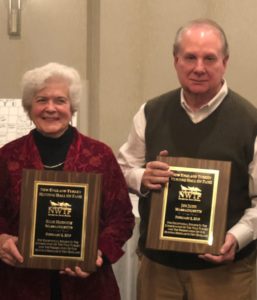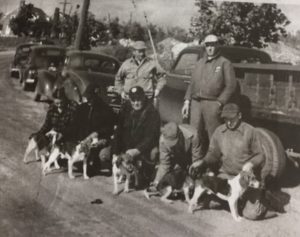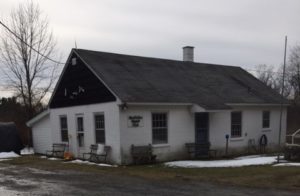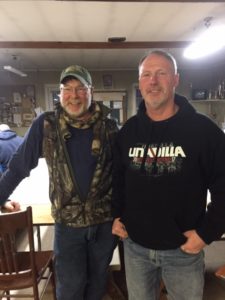Dennis Regan took the job in 1999 because he had a strong interest in the management of water resources and loved to kayak. That was 20 years ago and he didn’t think he would be here that long. Now, he is glad he did, for he worked with some great people and was involved with some wonderful projects.
One of those wonderful projects was the Stream Team project, where HVA goes to various communities to get people involved in protecting the river. After some training volunteers then go to specific sections of the river and document what they see…. the good, bad and ugly. With the information obtained, they meet and report on what they saw and make recommendations on what they would like to see happen. “That’s the challenge”, said Regan, “getting all of that information and compiling it down with specific concrete recommendations”.
“People get excited about the environment when they know more about it,” he said, “In providing people an opportunity to know more about the Housatonic River, they get actively involved in it”. They begin by collecting data on river conditions and use, that may not be known about, and hopefully, doing something with it. He said that volunteers have been collecting data continually for 20 years and have followed up on a lot of recommendations.
Originally, five stream teams compiled a list of existing conditions, on the river. Ten years after these original assessments they went back and reassessed those sections with other stream teams and different people. The findings were then compared with what was recommended 10 years prior to see what had happened. They were very happy to see that most of their recommendations were followed up by them or other organizations. Even the State and EPA used some of that information. Data collection is still ongoing and now the stream teams are assessing the tributaries.
“When the stream team reports of the health and use of the rivers were given to the communities, they generated local interest, more people wanted to know more about the river” said Regan.
He feels that the passage of the Clean Water Act of 1972 was the beginning of restoring our rivers. A main focus was getting the communities to realize that the Housatonic River was an asset and that we should be able to utilize the river to stimulate local economics, community development and recreation. HVA feels that the best way to get people to care and get involved in protecting the river is to get them on or near it. This way they can see for themselves that it is not a negative thing and they don’t have to fear it.
“Many people knew that there was a Housatonic River out there somewhere” said Regan, “but they didn’t quite know where it was and whether or not they could go paddling on it. And if they wished to go paddling on it, where do they put in or take out. People didn’t know anything about the river”.
HVA saw that as a great opportunity for them to fill that niche. They updated a paddle guide and created new access spots. They were fortunate with the Natural Resources Damage (NRD) Trustees. Through a grant with them, they were able to get four new river access points in Pittsfield, Lenox, Lee and Sheffield. Since then two more were added in Stockbridge at the Glendale Dam, and a floating dock was installed in Stockbridge. They are presently developing 3 new sites on Division St in Great Barrington, on the Westside Riverway Park project in Pittsfield, and on Maple Avenue in Sheffield.
Dennis is quite proud of the Churchill Brook Culvert Replacement Project in Pittsfield where they utilized another NRD grant and, working with the Berkshire Environmental Action Team (BEAT), replaced an ineffective culvert on Churchill Road with a much improved one which allows fish to travel upstream to spawn.
He feels that perhaps one of his proudest projects was the creation of the Old Mill Trail where volunteers and a professional trail crew developed a mile and a half trail along the East Branch connecting Hinsdale and Dalton. “It was one of our biggest projects and we are very happy to see that it is well used. It took 10 years, involving the towns, state, volunteers and Peter Jensen’s trail crew”, he said.
Dennis remembers that when he first got here, he usually didn’t see anybody on the river. People had left it alone. “Because of that,” he said, “when you paddled the river, you felt that you were in upstate Maine, NH or VT. It was fairly isolated”. People were missing an opportunity then, but now it is different. It’s good to see so many fishermen, boaters, kayakers, ice fishermen and others are enjoying the river. Now there are even fishing and paddling guides.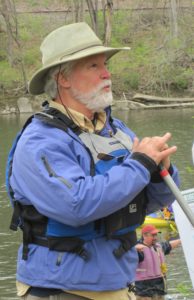
He feels that people are much more knowledgeable about the river now than before. There seems to be much more respect for the river and there are many efforts to protect the river now and not to do anything to harm it. If paddlers see blowdown, yes, they take some stuff out but not everything. They clear the middle of the river to allow passage, but leave the sides alone. They know that fish require such structure
Dennis also feels that he was very lucky to be involved in two source-to-sound paddle trips on the Housatonic River. These trips put in at the Hinsdale Flats in Washington’s Mud Pond and 10 days later take out at Long Island Sound with salt water, salt air and sea gulls. On this trip you see the river gradually change from the start by pushing your kayak or canoe through bramble. The vegetation and the land use changes, and all of a sudden you are in a wide river with eagles and the smell of salt in the air and you are paddling in waves ending in Long Island Sound.
Dennis was the recipient of the 2014 Berkshire County League of Sportsmen’s “Sportsmen’s Appreciation Award”. In addition to the above mentioned accomplishments, he was also acknowledged for his involvement in the FERC re-licensing of the Glendale Dam, the RIFLS Program dealing with observed and/or measured flow alterations in streams, for working with the grade schools focusing on biodiversity, both chemical and biological, water quality monitoring, mapping, storm drain awareness and understanding the PCB situation and cleanup.
He led macro-invertebrate studies on streams throughout the entire watershed, bank stabilization programs (planting native trees and shrubbery), dam removals, canoe rides, river clean-ups, oversight of ACEC’s, and was an active member of the CCC (Citizen’s Coordinating Council) dealing with the PCB clean up on the river.
Dennis plans to retire on April 30. His parting advice? You need to take some time to go out and attach yourselves to the river somehow. Either to paddle, walk along or sit by the river, relax and let yourselves subconsciously focus and you will see life everywhere in/on the river. “Go on the river”, he says, “and you will become a naturalist if you stay long enough. Appreciate the river!”
There is retirement party scheduled for him on Thursday, April 25. Contact Alison Dixon at the HVA office(adixon@hvatoday.org) for more information.
Spring Trout Stockings
The following was the anticipated stocking list for the week of April 8 through April 12. As always, the schedule was subject to change due to weather, river conditions or other unforeseen circumstances.
Rivers: Green River in Alford, Egremont and Great Barrington; Deerfield River in Florida, Buckland and Charlemont, Housatonic River in Hinsdale and Dalton, Konkapot River in Monterey and New Marlborough, Westfield River (Mainstem) in Huntington, Russell, Westfield and Montgomery; Westfield River (Middle Branch) in Worthington, Middlefield, Chester and Huntington. Lakes and Ponds: Ashfield Pond in Ashfield, Littleville Reservoir in Chester, Upper Highland Lake in Goshen, Mansfield Lake in Great Barrington, Littleville Reservoir and Norwich Pond in Huntington and Windsor Pond in Windsor.
Venison/Italian Buffet dinner
The Pittsfield Sportsmen’s Club will be having a Venison/Italian Buffet dinner on Saturday, April 20 at the American Legion Post 155 in Dalton. This dinner will benefit its Land Development efforts. Cocktails at 5:00 pm and Dinner at 6:00 pm. There will be a black powder gun raffle, 50/50 and kid’s raffle. Donation is $20 and children under 12 free. To reserve tickets, call Ed B. at (413)443-9371 or Stan B. at (413)841-8345.
School is out, help stock trout!
This Thursday, the public is invited to help MassWildlife stock trout during school vacation week. This is a chance to meet MassWildlife fisheries staff, view trout up close, and learn about places to fish near you. Meet at 1:30 p.m. at the Stockbridge Bowl Boat Ramp off Route 183 in Stockbridge. Bring some kids along.

